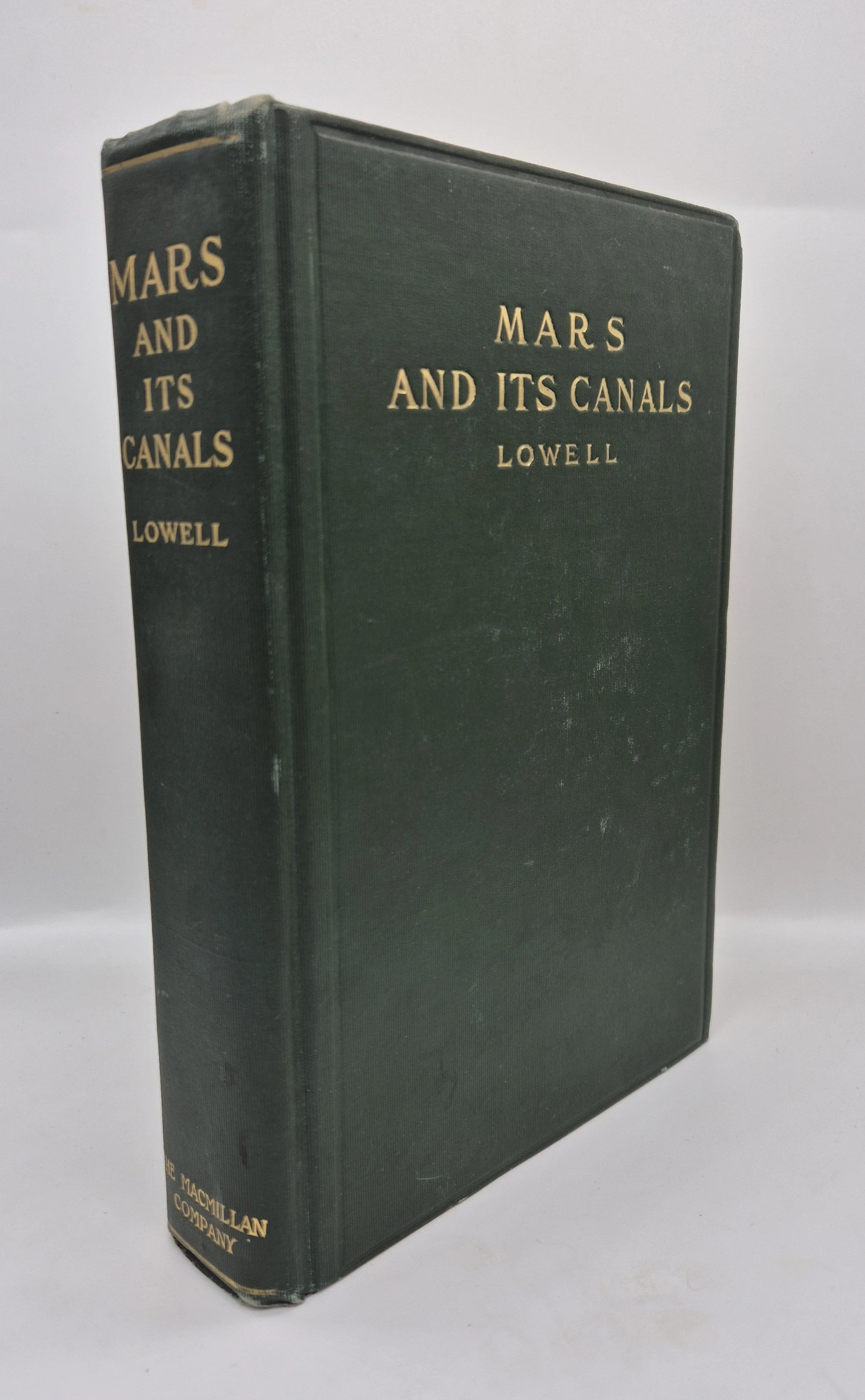 Image 1 of 2
Image 1 of 2

 Image 2 of 2
Image 2 of 2



Mars and its Canals
LOWELL, Percival
Mars and its Canals
London: The Macmillan Company, 1906
8vo., green ribbed cloth, lettered in gilt to upper board and spine, with single-ruled border in blind to upper board, and in gilt to backstrip; upper edge gilt, else untrimmed; pp. [vi], vii-xv, [iii], 3-393, [iii], copiously illustrated with frontis behind mounted tissue-guard and a further 15 pages of plates (one double), some in colour behind captioned tissue; as well as numerous black and white in-text diagrams; an excellent example of the heavy book, the boards with just a touch of shelf wear and rubbing at extremities; one light red scratch to the lower board; pencil mark to ffep, and some light scattered spotting mostly affecting the prelims; a sound, and very good example.
First edition of Lowell’s second book, with the printed dedication to G. V. Schiaparelli ‘the Columbus of a new planetary world’.
Published after the success of Mars (1896, see item 5), Mars and its Canals continued Lowell’s hypothesis concerning the existence of canal-like structures on the surface of Mars. Though his theories are now widely discredited, Lowell undoubtedly did much to contribute to both the advancement of astronomy (building one of the earliest observatories in North America), the discovery of the planet Pluto (in 1930 by Clyde Tombaugh), and to popular literature (it is said that H. G. Wells’ ‘War of the Worlds’ was directly inspired by his findings, with the author making the quite natural conclusion that aliens from a dying planet may well wish to invade another). Some of the most interesting hypotheses here can be found in the chapters on Vegetation (in which he postulates that the observable blue-green areas of the planet are not oceans, but vast forests), and ‘Life’ (concluding that the presence of water and other forms of life necessitate further intelligent beings).
A fascinating and highly influential treatise.
LOWELL, Percival
Mars and its Canals
London: The Macmillan Company, 1906
8vo., green ribbed cloth, lettered in gilt to upper board and spine, with single-ruled border in blind to upper board, and in gilt to backstrip; upper edge gilt, else untrimmed; pp. [vi], vii-xv, [iii], 3-393, [iii], copiously illustrated with frontis behind mounted tissue-guard and a further 15 pages of plates (one double), some in colour behind captioned tissue; as well as numerous black and white in-text diagrams; an excellent example of the heavy book, the boards with just a touch of shelf wear and rubbing at extremities; one light red scratch to the lower board; pencil mark to ffep, and some light scattered spotting mostly affecting the prelims; a sound, and very good example.
First edition of Lowell’s second book, with the printed dedication to G. V. Schiaparelli ‘the Columbus of a new planetary world’.
Published after the success of Mars (1896, see item 5), Mars and its Canals continued Lowell’s hypothesis concerning the existence of canal-like structures on the surface of Mars. Though his theories are now widely discredited, Lowell undoubtedly did much to contribute to both the advancement of astronomy (building one of the earliest observatories in North America), the discovery of the planet Pluto (in 1930 by Clyde Tombaugh), and to popular literature (it is said that H. G. Wells’ ‘War of the Worlds’ was directly inspired by his findings, with the author making the quite natural conclusion that aliens from a dying planet may well wish to invade another). Some of the most interesting hypotheses here can be found in the chapters on Vegetation (in which he postulates that the observable blue-green areas of the planet are not oceans, but vast forests), and ‘Life’ (concluding that the presence of water and other forms of life necessitate further intelligent beings).
A fascinating and highly influential treatise.

